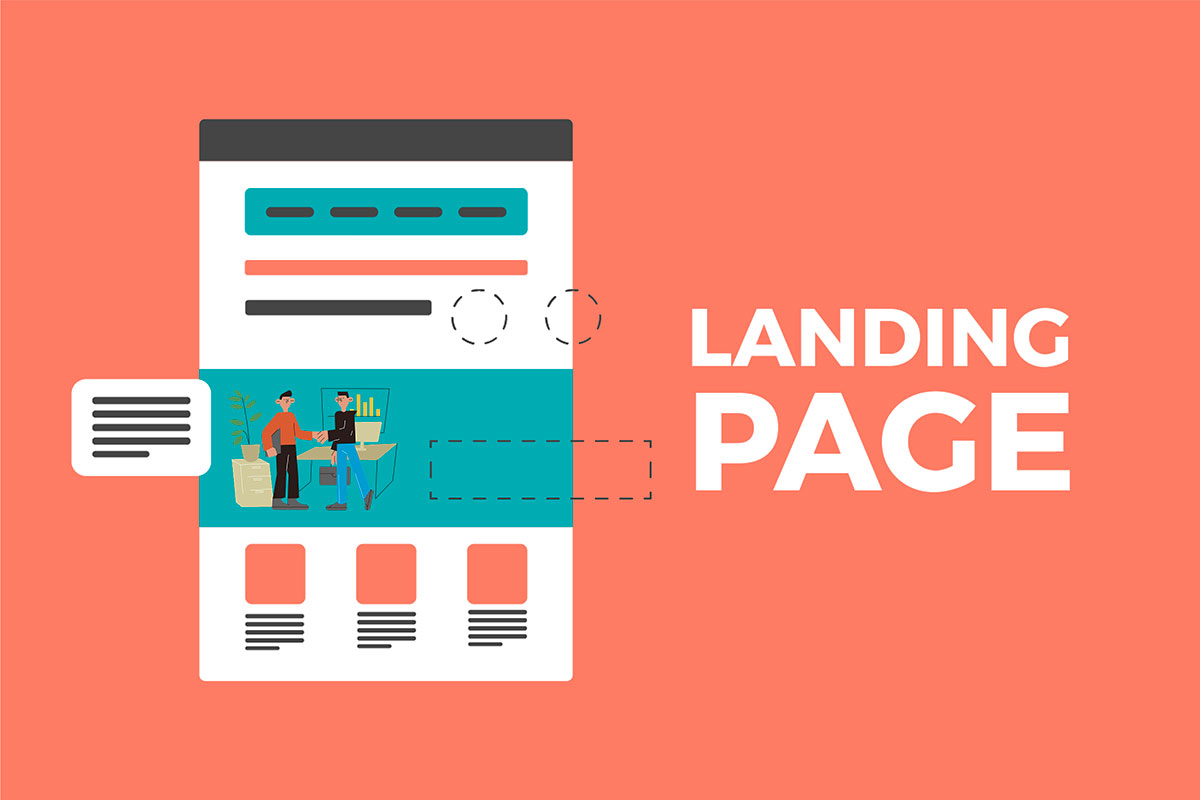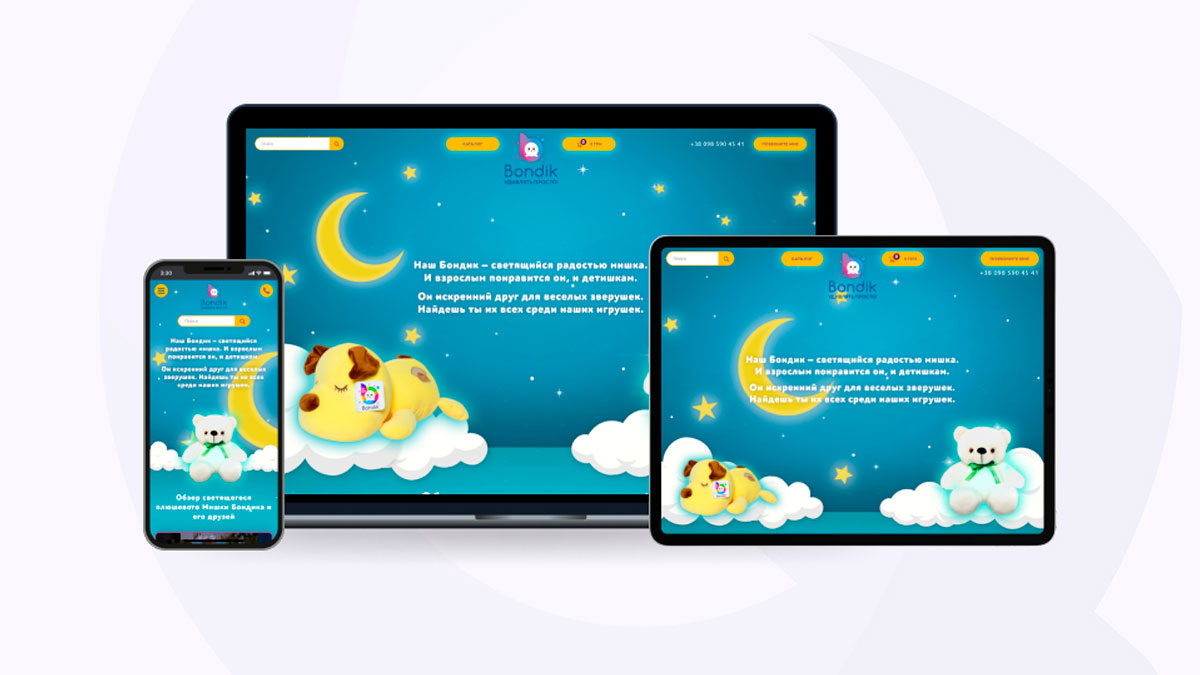Owners of small and medium-sized businesses are increasingly wondering how to create a one-page website from scratch and avoid mistakes, as a properly executed landing page can become a real magnet for customers and boost sales. In this article, we will look at the key points of developing a landing page, from choosing a domain and hosting to creating effective design and structure.
Why a landing page is useful for your business
Before discussing technical and design nuances, it’s important to understand why a one-page website is a beneficial tool for businesses:
- Focus on a specific offer. A landing page allows you to concentrate on a single product or service, increasing the likelihood that users will complete a purchase or inquiry.
- Higher conversion rate. Thanks to its concise structure and clearly stated benefits, a potential client receives all the essential information in one view. This often results in a higher rate of target actions (sign-ups, orders, requests, etc.).
- Simplicity and quick development. A landing page does not require a complicated multipage structure. It can be launched faster than a corporate website or online store.
- Effective data collection. Feedback forms, quick-order buttons, or quiz-based discount offers are excellent ways to collect contacts and leads.
You can find more detailed information on what is a landing page and how does it help increase sales in a dedicated post on our blog.

Key elements of a successful one-page website
A one-page website works best when all its parts function cohesively. Below are the most important elements that should be present on any landing page.
Design and usability
Visual appeal is the first thing visitors notice. It’s crucial for the design to be responsive and display correctly on all devices, without being overloaded with complex graphics that can slow page loading. A clean layout and readable fonts will help retain audience attention and increase conversion.
Structure and content
A clear, concise section structure helps highlight the key advantages of your product or service. Ideally, a landing page should include:
- Headline that catches attention and describes the topic of the page
- Unique Selling Proposition (USP) – a few sentences about the main benefit
- Block of advantages and features (why customers should choose you over competitors)
- Portfolio, work examples, customer testimonials
- Lead capture form or “Order” button
- Call to action (CTA)
Buttons or forms should stand out and be large enough so that their placement is noticeable to users, without forcing them to search around the page.
Stages of creating a one-page website
The process of building a landing page consists of several sequential stages. Instead of breaking them down into detailed steps, here is an overview of all the key points.
Choosing a platform: WordPress or a website builder
- WordPress. A popular free CMS with flexible capabilities. It allows you to install a variety of useful plugins and adapt design and structure to specific business needs. However, you’ll need reliable hosting and regular updates. In our view, it’s one of the best choices for managing a website.
- Online Website Builders. Offer a simple interface and quick startup. However, some platforms may limit SEO settings and structural edits. They may also require recurring subscription fees.
Below is a brief comparison table:
| Platform | Advantages | Disadvantages |
|---|---|---|
| WordPress | Flexible, numerous plugins, scalable | Requires monitoring updates and ensuring security |
| Конструкторы | Quick and easy setup | Limited features, reliance on the platform |
Domain and hosting
Choose a domain that is unique, has no problematic history, and is easy to remember, so visitors can recall it quickly. Your hosting should ensure stable 24/7 site operation, offer a high level of security, and support SSL certificate installation. Pay attention to server response time, as it affects page loading speed, particularly important for mobile devices, where users expect instant interaction with the content.
Design and site structure
Once you’ve selected a platform, the next step is to create a layout or template. Make sure it’s responsive across various screen sizes and plan the sequence of sections carefully. A clear heading hierarchy helps present information in a structured way and improves optimization in search engines.
Content creation and optimization
Your content should be unique and valuable for your audience. It’s a good idea to use relevant keywords in the text, helping both visitors and search engines understand what your landing page offers. Be mindful not to overload the text with keyword stuffing. Also pay attention to:
- Meta tags. Each page should have proper title (Title) and description (Description) tags.
- Internal linking if you have other articles or sections on the website.
Testing and launch
Before making your page publicly available or launching advertising campaigns, it’s recommended to conduct thorough testing:
- Check form and button functionality.
- Optimize the page loading speed.
- Ensure that the site displays correctly across different browsers and devices.
- Set up analytics to track traffic and conversions.
Common mistakes when creating a one-page website
Below is a list of frequent mistakes that cause a landing page to lose potential customers:
- Excessive repetition of the same information. This reduces user interest and undermines readability.
- Unclear structure. If visitors can’t immediately see the benefits of your offer, they’ll move on to a competitor.
- Outdated or cluttered design. Overusing animations and effects can negatively impact loading speed.
- Lack of a responsive version. Statistics show that most people browse sites on their smartphones, so a mobile-friendly version must work flawlessly.
- Invisible calls to action. CTA buttons shouldn’t be lost on the page; they directly affect conversion rates.
The price of developing a landing page and what it depends on
Project costs are calculated individually for each client based on factors such as:
- Design complexity. A unique style crafted to match your brand costs more than using ready-made templates.
- Functionality. Integrating payment systems, connecting a CRM, or providing multilingual support increases the total price.
- Deadlines. Rush projects usually involve additional costs./li>
- Additional services. Copywriting, SEO optimization, testing, and ongoing technical support all factor into the budget.
The average price for a standard landing page starts at around $1,000. For more detailed pricing, feel free to consult our managers.

Why you should order a one-page website from QuatroIT
At our web studio, QuatroIT specializes in creating professional websites of any complexity. We understand that a proper landing page is not just about good visuals; it’s primarily about being an effective tool for sales and customer acquisition. When you work with QuatroIT, you get:
- Unique web design that reflects your business specifics and audience preferences.
- Guaranteed responsiveness and fast page loading, critically important for mobile traffic.
- Optimized structure and high-quality copy, ensuring your one-page site stands out in search engines and attracts the right audience.
- Clear pricing. You’ll know exactly what you’re paying for.
- Post-project technical support. We provide consultations, updates, and maintenance, aiming for long-term collaboration.
By ordering a landing page from QuatroIT, you’ll receive a modern, optimized, and attractive website that brings in new customers and boosts your profits. Leave a request on our website, and we’ll help you create an effective landing page from scratch.











